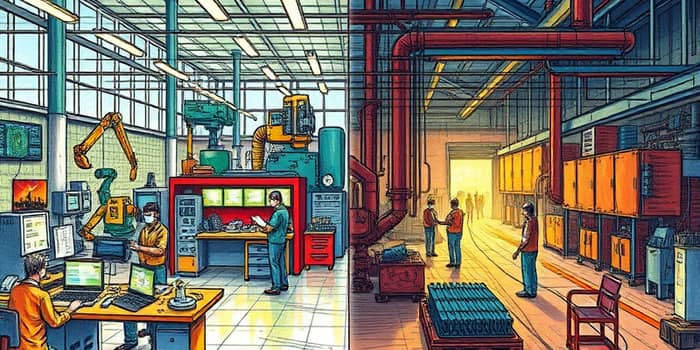
Over the past year, American workers have faced a tapestry of wage increases that tell two very different stories. On one hand, some sectors have seen substantial pay raises that significantly outpace inflation and reflect strong labor demand. On the other, many industries struggle to keep pace with rising living costs, raising questions about economic fairness and long-term stability.
This divergence shapes not only individual livelihoods but also regional prosperity and social cohesion. As incomes rise faster in some cities and fields, entire communities can be left behind, underscoring the need for targeted strategies to ensure broad-based progress.
As of May 2025, the United States recorded a headline wage growth of 4.72% year-over-year, a sharp uptick from 3.26% in March 2025. The Employment Cost Index reported a 3.5% rise for the 12 months ending March 2025, with the private sector closely trailing at 3.4%. These figures include both wages and benefits, with benefit costs alone adding 3.5% to overall compensation.
Average hourly earnings grew 3.8% year-over-year in April 2025, with a modest 0.2% increase month-to-month. After adjusting for an inflation rate of 2.3%, weekly wages rose from $1,200 to $1,248, delivering a real wage growth of 1.7%. That modest gain, however, varies widely across states; 43 states and Washington, D.C. saw positive real gains, while others barely budged.
While these numbers suggest a healthy labor market overall, they mask stark disparities beneath the surface. To understand the full picture, we must dive into industry-specific trends and the forces driving them.
Industry-specific data reveals a yawning gap between sectors buoyed by technological innovation and demographic shifts and those grappling with structural challenges. Engineering and scientific roles lead the charge, driven by acute talent shortages and heavy investment in research and development.
Conversely, resource-dependent and routine production sectors struggle with layoffs, automation pressures, and policy headwinds that cap wage growth. Manufacturing, for example, lost 87,000 jobs in 2024 despite federal funding, while utilities and mining trail stubbornly behind.
This split highlights a deeper economic transformation: jobs requiring advanced skills and higher education capture outsized rewards, while positions vulnerable to automation and cost-cutting see modest or stagnant growth.
Several interrelated factors fuel the widening wage gaps between industries:
These elements reinforce one another: as employers invest more in technology, they demand higher-skilled talent, which remains in limited supply. Regions lacking strong educational and training pipelines fall further behind, perpetuating a cycle of uneven growth.
The consequences of uneven wage expansion extend beyond individual paychecks. Unionized workers saw a 4.6% increase in compensation costs for the year ending March 2025, compared to 3.3% for non-union employees, underscoring the power of collective bargaining in securing gains.
Since 1979, wages for the bottom 90% of earners have risen by 32.9%, whereas pay for the top 1% soared by 171.7%, and for the top 0.1% by 344.4%. This historic wage polarization trend exacerbates inequality, as those at the top continue to reap disproportionate benefits.
Policymakers must weigh options such as expanding workforce training programs, incentivizing equitable pay practices through tax credits, or supporting local initiatives that bolster high-demand skills. Without targeted intervention, forecasts projecting 4.1% growth in 2026 and 3.9% in 2027 may continue to leave many sectors behind.
Workers and organizations can adopt proactive measures to thrive amid uneven wage dynamics:
Employers who partner with local education providers and offer apprenticeship programs can create talent pipelines that benefit both workers and the bottom line. At the same time, employees who diversify their skill sets—blending technical know-how with soft skills—gain a competitive edge in a shifting market.
Ultimately, wage growth remains a key indicator of economic vitality and social equity. The current uneven landscape underscores the urgency of tailored policies and strategic investments that bridge gaps rather than widen them.
By fostering collaboration between businesses, governments, and educational institutions, we can create a more inclusive growth trajectory—one where rising paychecks uplift entire communities, not just a fortunate few. As we move deeper into 2025 and look ahead to 2026 and beyond, the choices made by leaders and workers alike will determine whether wage growth becomes a force for shared prosperity or a driver of further division.
References













